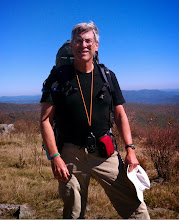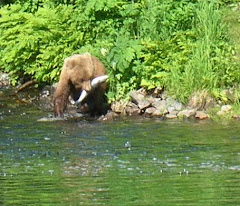It is exciting and daunting at the same time to take that first step in a marathon. You put that foot over that line, feeling just great, and you realize that you have 26.2 miles ahead of you. That is 46,112 yards, and since my stride is about 36 inches, that means I had 46,111 more steps to take. Having already done two marathons, I also knew that the last six or seven miles will be pure pain and fatigue. But there is no going back.
The race course will pass through three cities: Phoenix, Scottsdale, and Tempe. Most of the mileage is in Phoenix of course, the capital of Arizona. The course is pretty flat, so at least we won’t be going up and down hills. Like San Diego and unlike Anchorage, most of the course goes through urban environments, but there were still some natural beauty to be seen, most notable Camelback Mountain. It really does look like a dromedary if you use a little imagination:

A few miles into the race, a TNT coach pointed out a lady with a big balloon about 100 yards ahead. She said “if you don’t pass that lady by the half-marathon point, you will be pulled from the race.” Holy cow! I had started at the very back of the pack, and had not idea that I had to pass someone way in front of me to stay in the race. I starting really moving my butt at that point, and passed her within a few minutes. I made sure I never saw her for the rest of the race.
Unlike Alaska, there really wasn’t much hope of seeing wildlife along the race course, although there was this cool statue of desert bighorn at about mile 9:

Another mountain, seen about seven or so miles into the race is Piestewa Peak, seen in the photo below. At the time of the race, it was known as Squaw Peak, but it was renamed to honor Lori Piestewa in April, 2008. She was the first American Indian woman to die in combat in the US Military in our history, having given her life on March 23, 2003 in Nasiriyah, Iraq.

Even though I originally wanted to hit 5:55:55 in the race, I had decided not to stress over the time. Therefore, I took my camera along and I stopped frequently to take photos along the race course, taking a total of about 35 photos during the race. The memories meant more to me than a race time. Even so, I got really annoyed with myself when I stopped for a quick pit-stop in a very short porta-potty line, and seven minutes later whoever was using the facility still hadn’t come out. I left in frustration, realizing that I had just added seven minutes to my time for no reason.
During the first half of the race, my split time for the 10k was 1:27:37 and for the half-marathon it was 3:02:58. At that point, my goal of 5:55:55 or at least coming under six hours seemed like a long shot, although I kept telling myself that I could do it since I wasted seven minutes in the porta-potty line. I had starting running a little at about the ten mile point, and decided that I would keep running a little each mile for as long as I could, even though I really hadn’t trained with running. At the least, despite taking pictures, I had a great shot of beating my previous personal record of 6:14:15, from San Diego in 2006.
See photos from the second half...




















No comments:
Post a Comment